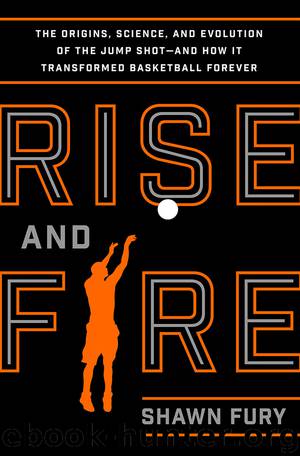Rise and Fire by Shawn Fury

Author:Shawn Fury
Language: eng
Format: epub
ISBN: 9781250062178
Publisher: Flatiron Books
PART THREE
GUNNER’S PARADISE
CHAPTER
TEN
1970s: NO CONSCIENCE REQUIRED
Floppy-haired, long-armed Pete Maravich scored more points than anyone in Division I basketball history, and on February 7, 1970, in a game against Alabama, the superstar with the haunted eyes scored the most points in a single game in his college career. Maravich—Pistol Pete—lit up the Crimson Tide for 69 points. To get there he took 57 shots, hitting 26. It was the quintessential Maravich performance—electric and absurd, over the top but somehow still not enough. Alabama held off Pistol Pete—and his LSU teammates who tagged along for the trip—106–104.
For a time—from the late 1960s through the mid-1970s—shooters and high scorers ruled basketball, especially in college, and performances like Maravich’s became, if not common, expected from certain players. The jumper became fully weaponized, creating scoring totals never before seen in basketball—and ones that haven’t been seen again. The words “unconscious” and “no conscience” became the favorite words when describing shooters. These players—superstars who averaged 35 or 44 points—attempted 30 or 40 shots every game, hitting jumpers from distances that left fans cheering, opponents muttering, and sometimes even their own teammates complaining. The NCAA Division I record book lists the twenty-six highest single-season scoring averages. Seventeen came between 1968 and 1978, and most of the time it was a great jump shooter setting the record. And of the top seven players with the highest career scoring averages, five of them finished their careers between 1970 and 1973. Coaches let shooters loose and many times ordered the players to act like they were the only ones on the court. It usually gave their teams the best chance to win, but if the team came up short, the shooters got labeled as losers. Transcendent talents, they enjoyed the type of freedom that’s unfathomable in today’s game. And often, their jump shot is what allowed their teams to win, even as writers and critics simply thought of them as nothing but gunners.
These baby boomers started practicing their shots in the late ’50s and early ’60s, when the jumper emerged as a legitimate play in basketball. But it was still an era when not everyone took advantage of the shot, when you didn’t see every kid on the playground working on it. For those who practiced it more than other players, and were blessed with natural talent, their jumper put them ahead of their time when they reached college. Seeing this, their coaches built programs around their skills, with those jump shots the focal point.
Jump shooting phenoms like Rick Mount, Calvin Murphy, Austin Carr, Dwight Lamar, and Travis Grant put up eye-popping numbers in college while Bob McAdoo did the same thing in the NBA. And then there was Pistol Pete, who wrecked defenses and scorebooks until injuries and his demons wrecked his career.
Call it the golden era of the jump shot. Not because these players always shot with great accuracy—as Maravich showed against Alabama and so many other times, they often didn’t—but because they lit up scoreboards and enjoyed an offensive freedom that soon went the way of the set shot.
Download
This site does not store any files on its server. We only index and link to content provided by other sites. Please contact the content providers to delete copyright contents if any and email us, we'll remove relevant links or contents immediately.
Unstoppable by Maria Sharapova(3118)
The Inner Game of Tennis by W. Timothy Gallwey(2990)
Urban Outlaw by Magnus Walker(2950)
Crazy Is My Superpower by A.J. Mendez Brooks(2860)
The Social Psychology of Inequality by Unknown(2310)
The Fight by Norman Mailer(2158)
Unstoppable: My Life So Far by Maria Sharapova(2128)
Going Long by Editors of Runner's World(1920)
Accepted by Pat Patterson(1917)
Motorcycle Man by Kristen Ashley(1860)
The Sports Gene: Inside the Science of Extraordinary Athletic Performance by David Epstein(1822)
The Happy Runner by David Roche(1821)
Backpacker the Complete Guide to Backpacking by Backpacker Magazine(1815)
Sea Survival Handbook by Keith Colwell(1794)
Futebol by Alex Bellos(1784)
Mind Fuck by Manna Francis(1743)
Peak: Secrets from the New Science of Expertise by Anders Ericsson & Robert Pool(1662)
Endure by Alex Hutchinson(1605)
The Call of Everest by Conrad Anker(1550)
